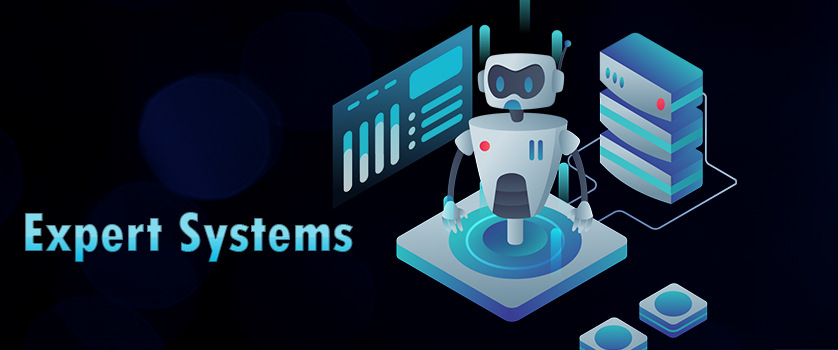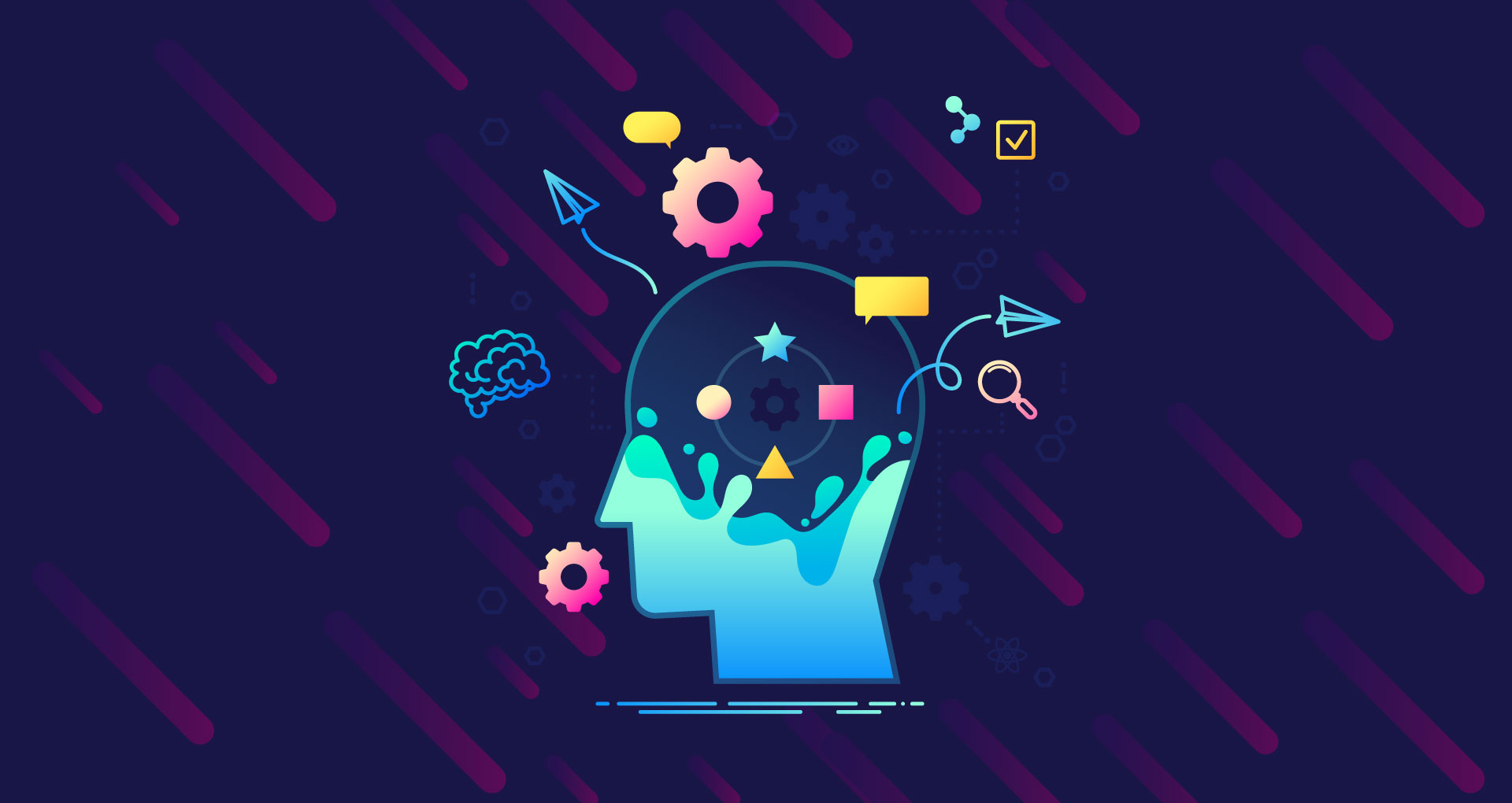
Anshul Jain
23 Apr 2020
Research in Artificial Intelligence (AI) has diversified drastically in the past few years. Be it machine learning, reinforcement learning, computer vision, natural language processing, or any other field of Artificial Intelligence, researchers are working hard to revamp these technologies, to further improve the quality of life. Expert System is one such prominent field of Artificial Intelligence, being used across industries to enhance computer programs.
Working behind the scenes, Expert Systems has transformed industries and is continuing to impact them exponentially. Let us delve deeper into the concepts of this technology and understand the role it plays in improving the AI system.
So, let’s get started!
What is an Expert System?
In the field of Artificial Intelligence, Expert Systems are computer programs that use AI technology to imitate the decision-making capabilities of a human expert, such as analysis, designing, judgment, problem-solving, etc. These are one of the first truly successful forms of Artificial intelligence software, introduced as a concept in the 1970s by Edward Feigenbaum, a professor and founder of the Knowledge Systems Laboratory at Standford University.
An assistant to decision-makers, expert systems simulate the highest level of human knowledge and experience, represented in the form of if-then rules rather than conventional procedural code. Moreover, it employs domain knowledge and uses a reasoning procedure to solve complex problems that would otherwise require human expertise.
In short, these high-performance computer systems are applied as knowledge engineering tools in any field to interpret, predict, diagnose, design, plan, monitor, and control systems.
What are examples of Expert Systems?
The constant advancement in Artificial Intelligence and other technologies has enabled industries to create more accurate and enhanced Expert Systems, such as ROSS, which is a recent example of expert systems.
ROSS is a self-learning AI Attorney powered by IBM’s Watson the cognitive computing system. It provides legal assistance using technologies like data mining, natural language processing, pattern recognition, and deep learning. Other popular examples of the expert system include PROSPECTOR, MYCIN, DENDRAL, Cogito Expert System, etc.
Characteristics of Expert Systems:
From helping AI programs achieve expert-level competence to distributing human expertise, Expert Systems are among the most efficient innovations in the field of Artificial Intelligence. Other important characteristics of expert systems are:
- It is based on expert knowledge acquisition.
- It is understandable & responsive.
- Offers the highest level of expertise, efficiency, and accuracy in problem-solving.
- It is highly reliable and delivers high performance.
- Contains knowledge from more than one human expert, which makes solutions more efficient.
- Most importantly, it is nonperishable.
- Incorporates a knowledge base containing accumulated experience and inference.
- Designed to advise, inform, and solve problems.
Architecture of Expert System:
All expert systems have a similar architecture that consists of certain components, as represented in the following structure of expert system:

These Components of Expert Systems help the system perform the task in hand successfully and are therefore, defined in detail below:
1. Knowledge Base:
Knowledge Base is a collection of domain-specific factual and heuristics knowledge formalized and organized by Knowledge Representation through:
- Frame-based systems.
- Product rules.
It helps ensure the quality, accuracy, and comprehensiveness of the data, the key ingredients for successful expert systems.
2. Inference Engine:
The main processing element of expert systems, the inference engine is an automated system that acquires and manipulates knowledge from the knowledge base to formulate accurate conclusions to the user’s problem. This knowledge from the knowledge base is acquired in the form of rule and applied to the known facts to infer new facts or reach the solution
This is achieved with the use of two methods of reasoning:
- Forward Chaining:
It helps make predictions and answer the question “what happens next?”. Moreover, it follows a chain of conditions and derivation to deduce the outcome, after considering all the facts and rules.
- Backward Chaining:
Unlike the forward chaining, backward chaining looks at the possible conclusions, to identify the reason to “why certain actions happened?”. It evaluates the situation by working backward to see if it might be true, to reach the cause or reason.
3. User Interface:
Another crucial part of Expert Systems, User Interface, is an inference that helps users interact with the expert systems. It takes the user’s query in a readable form and passes it to the inference engine, which evaluates it to display a solution to the user.
Capabilities of an Expert System:
As stated earlier, expert systems are not a substitute for decision-makers but assistants that are capable of performing the following tasks:
- Predicting results.
- Suggesting alternative solutions to problems.
- Demonstration and explanation.
- Instructing and assisting humans in decision making.
- Predicting results.
- Interpreting inputs.
What is the Need for Expert Systems?
Be it computer programming or diagnosing diseases, the uses of expert system are endless, a few of which are:
- Classification and Diagnosis:
Offer assistance in identifying objects based on their stated characteristics. - Monitoring:
Another need for expert systems is monitoring processes and actions, based on past behavior, data, or patterns. - Prediction:
Can be helpful in predicting scenarios and preparing optimal plans like contract estimation, weather forecast, etc. - Designing:
Configuring and developing a system based on its specifications.
Types of Expert Systems:
Expert Systems are categorized into five different types, each of which caters to different domain analyses and is useful in overcoming certain drawbacks of other types of expert systems. The list of expert system types are:
- Rule-Based Expert System:
The rules based expert systems represent knowledge with the assistance of a set of rules, depicted in the form of IF-THEN rules. These rules represent the domain knowledge and set of facts that help reflect the current situation. A rule-based expert system has a uniform structure of rule base, wherein each rule is an independent piece of knowledge or information system.
Rule-Based Expert System is further divided into five different parts, namely:
- Knowledge Base.
- Database.
- Inference Engine.
- Explanation Facility.
- User Interface.
- Fuzzy Expert Systems:
As suggested by its name, Fuzzy Expert Systems are expert systems that use fuzzy logic to represent knowledge instead of Boolean logic. It is a collection of membership functions and rules that are used to reason about data. Like Rule-Based Expert Systems, a fuzzy expert system too represents knowledge in the form of IF-THEN rules.
- Frame-Based Expert System:
Unlike the former two types of expert systems, knowledge in frame-based expert systems is represented through frames, which are implemented using the object-relational database technology. This type of expert system is used as the knowledge representation for expert systems with a large and complex knowledge base.
- Neural Expert System:
The neural expert system is a hybrid expert system that combines the advantages of both neural network and rule-based expert systems. Also known as the Connectionist expert system, this expert system has a neural knowledge base, where knowledge is stored in neurons in the form of weights.
Still unsure about what is a neural expert system? Check out our article here to learn more.
- Neuro-Fuzzy Expert System:
Another hybrid expert system, the neuro-fuzzy expert system combines the parallel computation and learning abilities of neural networks with the fuzzy system’s human-like knowledge representation and explanation ability. It can learn using standard learning algorithms developed for neural networks and can be trained to develop IF-THEN fuzzy rules to determine membership functions for input and output variables of the system.
Process of Building Expert Systems:
Now that we have covered the major concepts of Expert Systems, let us understand how expert systems are built. The development of expert systems follows an iterative process, wherein the domain experts, knowledge engineers, system engineers, and users play various important roles. This process includes:
- Identification: The process is initiated by determining the characteristics of the problem.
- Conceptualization: Once the problem is identified, the knowledge engineer and domain expert work together to find the concept to produce the solution.
- Formalization: This is the designing phase, where the structure is designed to organize the knowledge, using various knowledge representation and intelligent search techniques, expert systems technologies like the expert system shells, and programming languages.
- Implementation: During implementation, the formalized knowledge is programmed into the computer and the knowledge structures, inference rules, and control strategies established in the previous stages are organized into a suitable format.
- Testing & Maintenance: Final stage of the process where the focus is on expert system verification, validation, and maintenance to find and fix syntax errors as well as to ensure that the knowledge is accurately mimicked.
What are the Applications of Expert Systems?
In the past few years, the impact of expert systems on industries has grown evidently, as organizations are adopting and integrating the technology to enhance numerous systems and processes. Some of the expert system application example are:
- Healthcare: Expert System in healthcare is used to create diagnosis systems that deduce diseases like cancer, based on the available data.
- Finance: From detecting possible frauds and suspicious transactions to helping assess loan credits, prepare advisory plans, etc. expert systems are being extensively used in the financial sector to make processes agile and secure.
- Process Control Systems: Experts systems are helping analyze real-time data from physical devices to identify anomalies, predict trends, and control both optimality and failure correction.
- Planning & Scheduling: Be is airline scheduling, manufacturing job-shop scheduling, manufacturing process planning, or more, expert systems are helping transform the planning and scheduling.
Advantages of Expert Systems:
Some of the major advantages offered by expert systems are:
- Expert system is easily available.
- Reduces risk, as it can work in any environment.
- Compared to humans, it has less error rate.
- Reduces production costs.
- It offers speed and steady response.
- Helps distribute knowledge.
Disadvantages of Expert Systems:
Technology, no matter how advanced, cannot be perfect. Similarly, expert systems have some disadvantages associated with it, a few of which are mentioned below:
- Lacks emotions & common sense.
- It is domain-specific.
- Incapable of learning.
- Needs to be updated manually.
- Cannot explain the logic behind the decision.
- Lacks creative responses humans are capable of.
- Difficult to automate processes.
- Lacks flexibility and ability to adapt to changing environments.
Other Limitations of Expert Systems:
Apart from the disadvantages mentioned above, there are certain limitations of expert systems that need consideration. These are:
- It depends upon the collection of highly accurate and precise knowledge.
- It requires excessive training, which can be time consuming and expensive.
- The cost of maintaining expert systems is high.
- Knowledge acquisition is another challenging feat.
Conclusion:
Nowadays, when the world is highly dependent on technology to perform even the minutest of tasks, expert systems have given way to the development of new and advanced AI systems that work effortlessly in environments that are unsuitable for human beings. These not only reduce the time and effort of completing a task but also provide the necessary assistance to solve a problem quickly. Considering this, there is no wonder, the adoption of this technology is increasing rapidly across industries.




